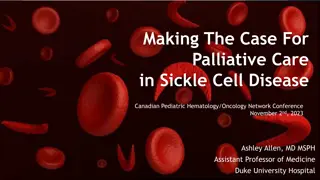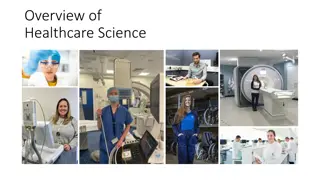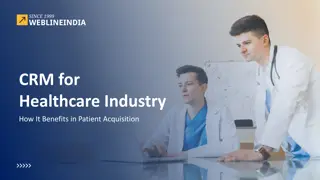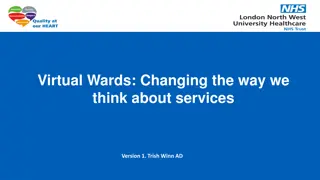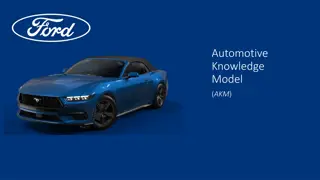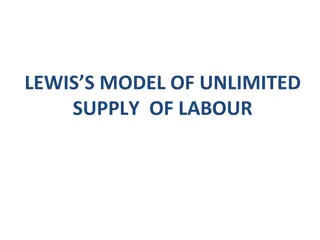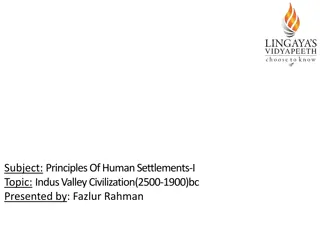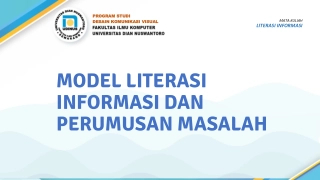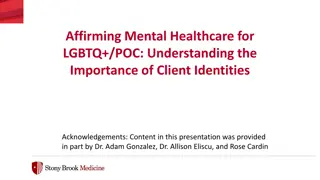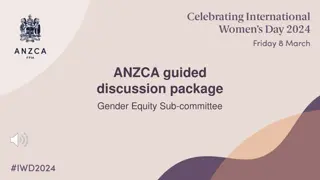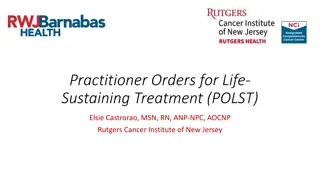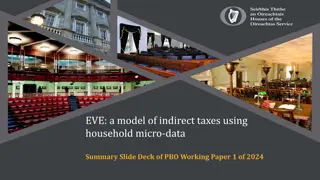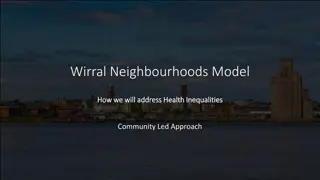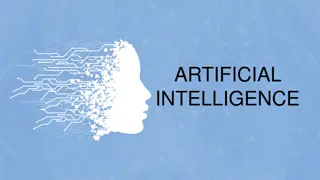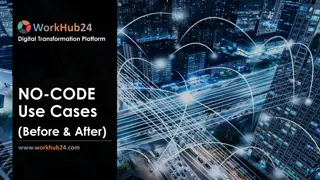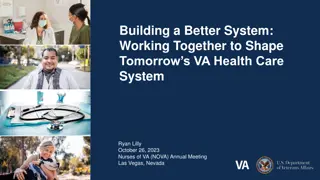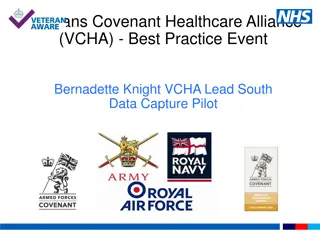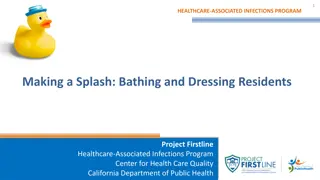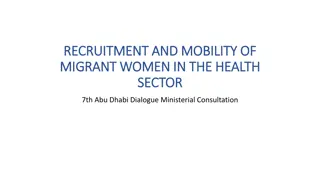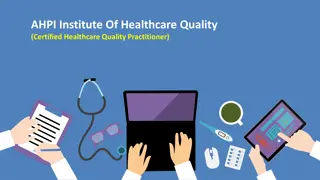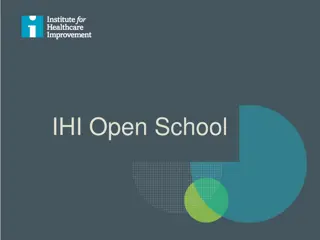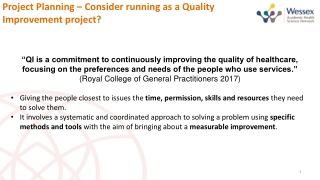Understanding Nocebos and the Biopsychosocial Model in Healthcare
Exploring the concept of nocebos, neutral substances believed to be harmful, and their effects on the human body. Delving into the importance of the biopsychosocial model in healthcare, which considers various factors impacting health beyond just the physical aspect, emphasizing the interconnectedness of mind and body.
Download Presentation
Please find below an Image/Link to download the presentation.
The content on the website is provided AS IS for your information and personal use only. It may not be sold, licensed, or shared on other websites without obtaining consent from the author. Download presentation by click this link. If you encounter any issues during the download, it is possible that the publisher has removed the file from their server.
Presentation Transcript
Class 2: Physio 1 Wrap up Class 1 Class 2: Physio
Attendance and House Rules Attendance: Taken at start of each class. Three free absences for any reason, then they count, any reason. Decorum 1. Cell phones/texting. Please don t 2. Taking notes on laptop, other device: Please do! 3. Food and beverages: Drinks OK, food not--distracting
Nocebos Nocebo is neutral substance that is mis-believed to be harmful. Nocebo means I will harm . Nocebos have: a. Induced drowsiness b. Headache c. Dizziness d. Stomach upset e. Difficulty concentrating f. Death!!! Nocebo: A mean nothing burger.
NOCEBO STUDIES 1. Subjects told a mild electric current may induce headaches. a. There was no current. b. 66% of subjects report headache 2. Same null treatment can be both nocebo and placebo a. NOCEBO: Subjects get saline injection told it will induce allergic reaction. Many get allergic reaction. B. PLACEBO: Subjects with NOCEBO reaction get a second saline injection. Told it will reduce allergic reaction. And in many cases, this happened. Nocebos induced by color of pills: X ____Sedation ___ Stimulation ____Sedation ___ Stimulation Blue pills lead to: Red pills lead to: X
SUPER NOCEBO: VOODOO DEATH Walter Cannon: 1871-1945 Cannon hears stories of voodoo death . a. Maori woman learns she s eaten fruit from taboo place. Dies 24 hours later. b. Man becomes seriously ill after witch doctor points doom bone at him. When told by witch doctor that this was a mistake, the man gets better. Explanation: Overwhelming fear shocks system, creates mega- stressor. Combination of sudden drop in blood pressure + surge in adrenaline taxes the system. Problem: Based on anecdote. Morally impossible to test.
Biomedical Model Vs. Biopsychosocial Model Biopsychosocial Model Biomedical Model Reductionist: Work with smallest units. Blood lacks iron; take iron pills. Single factor: Smoking cardiac illness Macro-level as well as mirco-level Blood lacks iron: Review total diet Multiple factors: smoking + overeating + stress cardiac illness. Mind and body inseparable Overweight: Change diet, also what stressors make you food dependent? Emphasizes both health and illness Anti-cholesterol med + exercise routine + fun leisure activities. Assumes mind-body dualism. Overweight: lose 20 lbs. Just do it. Emphasizes illness over health. Put you on anti-cholesterol med.
Lecture 1 Review Question 1 The mind and body were seen as separate during what era of human history? ___ A. Pre-historic (up to 2000 BCE) ___ B. Greeks and Romans (600 BCE to 300 CE) ___ C. Dark Ages/Middle Ages (400 CE to 1500 CE) ___ D. Modern era (1700 to mid-20th Century) ___ E. All of the above X
Lecture 1 Review Question 2 A substance that is in fact neutral (like saline solution or a sugar pill) but that causes people to believe it is harmful, and causes them to have negative symptoms, is a: ___ A. Trephination ___ B. Nocebo ___ C. Black bile ___ D. Placebo ___ E. None of the above
Tips on Reading, Studying, and Class Notes 1. Take notes during class. Don t be a passive listener. AN IN-CLASS DEMO DO NOTES REALLY MATTER? LEFT SIDE OF CLASS TAKE NOTES, RIGHT SIDE OF CLASS, KICK BACK AND ENJOY THE RIDE END OF CLASS, WE LL SEE IF THIS MATTERS
Health Psychology Class 2 Physiology, Part I "Were they normal?" What a question to ask! And it is always those who know nothing about human nature, who are bored by psychology and shocked by physiology, who ask it. E.M. Forester (1910), Howards End
Topics Covered Today 1. Nervous system 2. Endocrine system 3. Cardiovascular system
Nervous System (NS) Functions Functions of the NS? Sensation/sensory: What are the senses? Sight, hearing, touch, smell, taste, kinesthesia = Movement of body parts proprioception = Position of body parts Generate thoughts and emotions Execution of movement Regulation of other systems Respiratory, digestive, circulatory, etc.
NeuronBuilding Block of Nervous System synaptic cleft Neurotransmitters are: chemicals released by axons, absorbed by dendrites, passing messages from neuron to neuron.
Neurotransmitters Neurotransmitters are chemicals that pass between nerve cells. Catecholamines: Epinephrine and Norepinephrine a. Released in response to stress b. Body changes 1. Sympathetic NS arousal 2. HR increases 3. Respiration increases 4. Digestion/urination decrease (why?) c. Chronic stress taxes systems: Leads to? Heart disease, Hypertension NS = Nervous System HR = Heart Rate
The Brain Ave. Size: 1274 cubic cm (big enough to hold a quart of milk). Ave. Weight: About 3 pounds Questions: 1. Does brain size matter? A bit; about 12% of smarts due to brain size. 2. Is the brain where the self lives? Yeah, but still working on that one!
Principle Lobes of the Brain FRONT Kinesthetics; touch, pain, temp, pleasure Memory; vol activity sight Analyses, emotional regulation Hearing, smell (pizza!) Note: Just know main lobes + prefrontal and cerebellum
Basal Ganglia Basal Ganglia Job Description: 1. Muscle movement, procedural learning 2. Action selection: Fight? Flight?, Focus on lecture or surf web? 3. Eye movements, cognition, emotion Damage leads to: Tourette Syndrome, Obsessive Compulsive Disorder, Addiction, Parkinson s Disease
Recticular Activating System (RAS) RAS: Mr. Attention RAS Governs Three states of arousal: 1. Waking 2. Asleep (slow-wave sleep) 3. Asleep and dreaming Narcolepsy: Disease of RAS
Limbic System: Emotion Central Socially-relevant behavior Cognition, analyses, emotion regulation Sense of smell Self-preservation, fight/flight Limbic System: Mr. Emotion Insula Cingulate Gyrus
Autonomic Nervous System Function: Control of internal organs Sympathetic NS (NS = Nervous System) a. Emergencies, emotions, hard work b. Activated during stress c. Catabolic = energy using Parasympathetic NS a. Controls organs during normal times (non emergencies) b. Antagonistic to sympathetic NS Restores homeostasis
Subsystems of Nervous System Sensory (visual) to brain Brain to spinal cord Spinal cord to peripheral nerves Autonomic NS Parallel Parking in Jersey City Sympathetic NS Mobilize for action (fight/flight) Peripheral nerves to muscles Parasympathetic NS Restores to equilibrium after danger passed
Diseases and Dysfunctions of the Nervous System Epilepsy: Cause: idiopathic (no known cause) Suspects: head injury, disease, genes Symptoms: seizures Treatment: Minimal, surgery, drugs Cerebral palsy Cause: Air-flow restricted at birth Symptoms: Motor control impaired Mental deficiencies Multiple sclerosis Cause: Myelin degeneration, auto-immune Symptoms: Body control loss, fatigue Treatment: Maybe stem cell
Diseases and Dysfunctions of the Nervous System Alzheimer's Disease: Cause: Plaque buildup Symptoms: Cognitive degeneration Paraplegia: Cause: Spinal cord injury Symptoms: Paralysis of lower limbs Quadriplegia Cause: Spinal cord injury Symptoms: Paralysis of all limbs
Endocrine System Endocrine collaborates with NS NS Fast, short acting Endocrine slow, long lasting Glands, secrete hormones to blood Stimulate organ changes Regulated by hypothalamus, pituitary Adrenals: Release steroids, regulate kidneys, carbo. metabolism, healing. Adrenals are implicated by stress
Released during sex; also childbirth and lactating Induces interpersonal bonding: Induces Prosocial Behavior Trust, generosity Induces maternal behavior May help explain autism: Oxytocin deficiency
Disease of Endocrine System: Diabetes Cause: Body does not produce or utilize insulin Insulin: Converts sugar and carbs into energy Type I (insulin dependent) a. Not enough insulin produced b. Most serious Type II a. Body not responsive to insulin b. Leads to obesity Symptoms a. Hypoglycemia: Insufficient blood sugar, quick onset, give sugar. b. Hyperglycemia: Too much blood sugar: thirst, slower onset, give insulin. Complications: Heart disease, blindness, renal failure, amputation, death
Cardiac System: Blood Flow Through the Heart
Circulatory System Lungs to Cells Cells Back to Heart Lungs (oxygenated blood) cells, muscles, organs heart (L. Ventrical) heart (R. Atrium) aorta to arteries lungs (CO2 expelled / Oxy inhaled) muscles, organs, cells Heart (L. Ventrical) Color in ? Transports? Color out ? Transports? Blue Wastes, CO2 Red Gasses, nutrients
Cardiac Cycle Phases Systole: Blood pumped OUT FROM heart Diastole: Blood pumped INTO heart Stress: Cycle accelerates, due to decreased diastolic phase, which fatigues heart, thus reducing blood pumped out.
Diseases of the Heart Atherosclerosis Due to: cholesterol deposits Symptoms: a. Angina pectoris: Chest pain b. Myocardial infarction (aka heart attack) c. Aneurysm: Bulge in artery wall stroke d. Phlebitis: Inflammation of vein. Arteriosclerosis: hardening of the arteries Rheumatic fever: Bacterial infection, hardens valve flaps
Blood Adult contains 5 liters about 1.33 gallons Composition a. Plasma (55%): Proteins, salts, stuff cells transport b. Blood cells (45%) Blood cells 1. White blood cells/Lymphocytes: Immune agents; infections, foreign agents. B Cells and T Cells 2. Red blood cells/Hemoglobin: Carries oxygen to body. 3. Platelets: Halt external bleeding and injury to cell walls.
Blood Related Diseases Leukemia: too many white blood cells, due to cancer Leukocytosis: Too many white cells, due to disease response Leukopenia: Too few white blood cells Anemia: Too few red blood cells Sickle cell anemia Hemophilia: Can't produce clots. "Royal's disease", why? Inbreeding among royal families makes hemophilia common among them.
WERE DONE! BUT See Harry s Eventful Day, below, as a review aid
Harry's Eventful Day: An Ape-ealing way to Review Physiology I Harry is walking to his apartment. He comes to red light and stops. The part of his brain used to make this conscious decision is the: X _____ Telencephalon (upper cortex/cerebral cortex) _____ Diencehpalon (inner cortex) _____ Midbrain _____ Corpus Trafficus Harry passes a plate glass window and admires his smooth, regular gait (manner of walking). He says to himself, "Wow, my _______ ganglia is dah bomb! Basal
Then he passes Robert's Pizza, and takes a big whiff of sizzling pepperoni, which activates the _________ lobe of his cerebral cortex, where sense of smell is located. TEMPORAL Harry stops by a news stand and sees a funny headline "Insane orangutan on loose in Newark". The lobe in his cerebral cortex that comprehends and remembers this headline is the ______ lobe. . FRONTAL Harry goes up to his apartment, which he shares with Wilfred. The place is completely trashed! Garbage strewn everywhere. Broken lamps. Smashed plates. Harry is about to scold Wilfred for his bad behavior, but he's suddenly more alert due to this event. He is awake. This is because Harry s ___________ Activating System (RAS) is aroused. RECTICULAR
Suddenly Harry spots a large orange/yellow hulking apelike thing bouncing up and down on his bed. What part of Harry's autonomic NS kicks into action, SYMPATHETIC or PARASYMPATHETIC? The pathway through which this disturbing information is processed is a follows: Eyes to inputs, to the Heart Rate Digestive which recognizes sensory which elevates Harry's (breathing) and reduces activity (food appetite) and his (hubbah! hubbah!) desires. lobe, to the Hypothalamus Occipital Thalamus (HR) and Respiration his Sexual
Harry is highly aroused (scared, anxious), which is because his nervous system is activated. Because he is in /flight mode, which structure within this system is aroused: ____ Amygdala & hippocampus ____ Cingulate gyrus & septum ____ Anterio thalamus EMOTIONALLY SYMPATHETIC FIGHT X Because of this stressful event, Harry's adrenals go to work. The produces metabolism and reduce in case of injury. Inflamation which increase Adrenal Cortex Corticosteroids The adrenals secrete (aka ), amines, which arouses his body for action. Catachol and Nor___________ adrenaline Adrenalin
Harry thinks to himself, if that crazed ape gets me, he could break my back leading to which is the paralysis of my legs. , Paraplegia Quadraplegia Worse, this could lead to which is the paralysis of my upper body and lower body .
Suddenly the orangutan stops jumping, enters the living room, and says "Hi Harry! how you like the new costume?" It's that crazy Wilfred. Harry says, "Gee Wilfred, you sure had me going. I thought I would have a (that is, a heart attack). Myocardial Infarction Although the danger is over, Harry is still in an aroused state because his SYMPATHETIC or PARASYMPATHETIC nervous system has not yet returned his body to its normal state.




